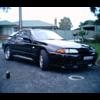Xr6 Gt35r
Announcements
-
Latest Posts
-
Thanks for that tip, niZmO_Man. I think the battery is OK. It's quite a new one, but I'll check. Last time I needed a new battery, everything electronic was fine, except that there wasn't enough current to turn over the starter. I decided to order one of the partial AV system translation CDs from Car Audio Workshop in NZ. That might have some effect, or help me diagnose the date problem. 🤞
-
By Dose Pipe Sutututu · Posted
I suppose it was relatively stock too, the JZ motor handle most mods thrown at them without even breaking a sweat -
I saw your intro update, are you sure you've actually had a starter motor failure? You mention it could be the alarm causing it. I'm assuming you've got a no start issue, but what are the exact symptoms, as there could be a few reasons it has stopped wanting to start.
-
Physically, you'd expect it to turn the motor 11/8ths faster than a standard one, but I'm not sure of specifics
-




Recommended Posts
Create an account or sign in to comment
You need to be a member in order to leave a comment
Create an account
Sign up for a new account in our community. It's easy!
Register a new accountSign in
Already have an account? Sign in here.
Sign In Now